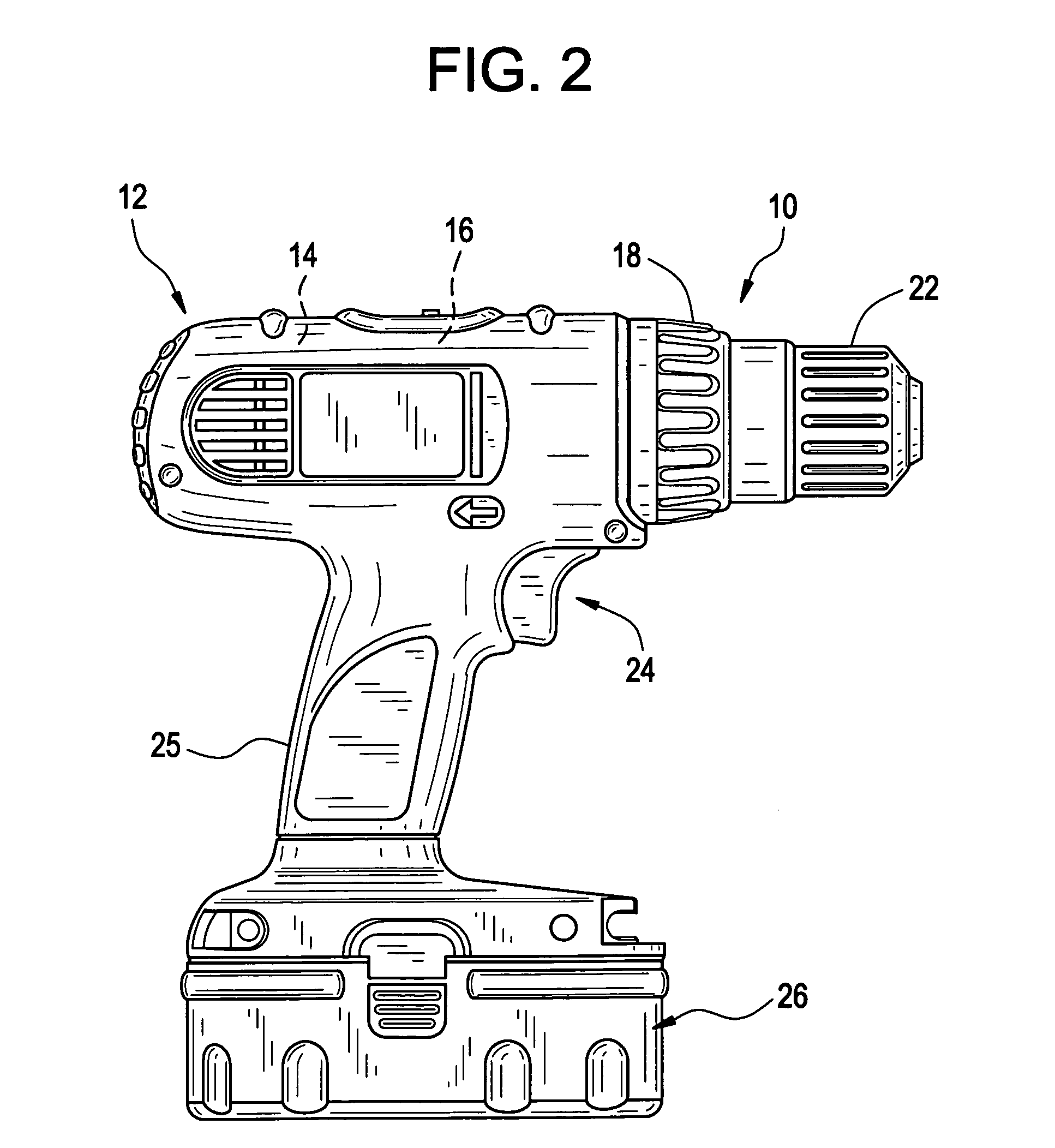Cordless power tool system with improved power output
a power tool and cordless technology, applied in the direction of portable power tools, cell components, drilling machines, etc., can solve the problems of reducing power output, weight of cordless power tools for a given power output may be higher and/or substantially higher, and the general performance of cordless power tools cannot be closely approximated
- Summary
- Abstract
- Description
- Claims
- Application Information
AI Technical Summary
Benefits of technology
Problems solved by technology
Method used
Image
Examples
Embodiment Construction
[0038]As used herein, power tools may be occasionally characterized and / or classified by the terms “primarily single-handed use” or “single-hand”, “primarily two-handed use” or “two-hand” and “primarily supported-use” or “supported-use”. A single-hand cordless power tool may be understood as a power tool typically used with one hand. A two-hand tool may be understood as a power tool typically used with both hands. A supported-use tool may be understood as a power tool requiring a support surface for proper operation, for example, i.e., a tool that may be operated against or across a supporting surface. These classifications are not intended to be inclusive of all power tools in which the example embodiments of the present invention may be applied, but are only illustrative.
[0039]Example primarily single-handed power tools may include, but are not limited to: drills, impact wrenches, single-handed metal working tools such as shears, etc. Example primarily two-handed power tools may i...
PUM
| Property | Measurement | Unit |
|---|---|---|
| weight | aaaaa | aaaaa |
| weight | aaaaa | aaaaa |
| power | aaaaa | aaaaa |
Abstract
Description
Claims
Application Information
 Login to View More
Login to View More - R&D
- Intellectual Property
- Life Sciences
- Materials
- Tech Scout
- Unparalleled Data Quality
- Higher Quality Content
- 60% Fewer Hallucinations
Browse by: Latest US Patents, China's latest patents, Technical Efficacy Thesaurus, Application Domain, Technology Topic, Popular Technical Reports.
© 2025 PatSnap. All rights reserved.Legal|Privacy policy|Modern Slavery Act Transparency Statement|Sitemap|About US| Contact US: help@patsnap.com



